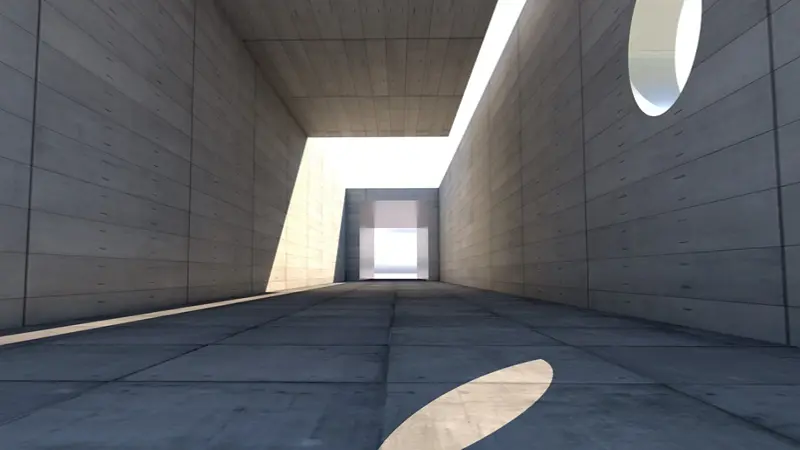The present digital progression has led us to consume the majority of our architectural material through photos rather than practical encounters. Of sure, this is a positive and beneficial development. In essence, architectural photography is popular nowadays, so if you want to learn more about it, here’s an in-depth explanation to what it is and how to achieve the best results. You may also improve the quality of your photos by utilizing an online Image Upscaler powered by VanceAI technology.
What is architectural photography?
Architectural photography, often known as structure, building, or architecture photography, is a type of photography that focuses on photographing buildings and other scenic settings. This can include, but is not limited to, interiors and exteriors, city bridges, monuments, and cityscapes. Architecture photography was first defined as the documentation of buildings. However, throughout time, it has grown into a variety of commercial art forms, internet magazines, and even project team portfolios.
Main Architecture Photography Styles
1. Exterior architecture photography
As the name implies, this style of photography depicts photos of the outside of structures. Exterior architectural photography takes use of the availability of natural light during the day, which reduces the stress of shooting exteriors during this time. It also benefits from the ambient light of nearby street lights, as well as sky twilights in the darkest of conditions. Furthermore, depending on natural whim, exterior architecture photography may provide a variety of moods and spectacular outcomes.
2. Interior architecture photos
This type of architectural photography depicts the interiors of buildings and other structures. Usually, capturing this might be difficult since the ambient illumination available through apertures is rather restricted. In most cases, the lighting are filtered, robbing the image of the naturality it was intended to have. However, in most cases, artificial lighting comes to the rescue and helps capture the components correctly. In essence, one of the most important factors in achieving an accurate outcome in interior architectural photography is the type of lighting chosen.
Top suggestions for architecture photography:
1. Determine the optimal posture.
Your stance should be the first thing you consider while following any architecture photography tips. The most easy method for capturing scenic images is to set your camera perpendicularly at 90 degrees to the vertical lines of the structure. You may improve the visual attractiveness of your photos by modifying perspectives and the focus plane to capture images with several parallel vertical lines.
2. Experiment with different shooting angles.
Capturing from unusual perspectives is another important factor in producing eye-catching building photographs. Get creative with your perspective–this is not only fun, but the prize it represents is also substantial. Take your time, look for different viewpoints, blend in with the surroundings, and choose an angle that can capture the most overlooked and delicate aspects of the structure. I feel this will bring the structure to a new level of aesthetics and appeal.
This advice is also applicable to various types of picture shoots; for more information about Fairy photography, see this article: Guide to Creating High-Quality Fairy Pictures.
3. Shoot at various times of the day or year.
Photographers usually look for periods with the most dramatic lighting to capture classic and gorgeous architectural wonders, such as sunset hours. While this might give the photograph a pleasant ambient vibe, it only captures a small portion of the building’s diverse range of atmospheres. For a more complete experience, photograph those buildings at different times of day and seasons.
4. Pay attention to adequate lighting.
Regardless of when you capture the photographs or what style of architecture photography you do, finding the optimum lighting should always be at the top of your priority list. Great lighting in architectural photography emphasizes the space, the subject structure, and the overall ambiance associated with it. As a result, we may conclude that it has a considerable impact on people’s comprehension of the core of a certain architectural photography project.
5. Post-editing is equally crucial.
This is the least popular architectural photography tip. However, you should always put your images via image processors to alter factors like perspective. White balance, contracts, sky modifications, and so forth. Sometimes you may even require a program to remove background online and polish the complete operation. So, learn as many simple or professional picture editing tools as possible, because they will be useful as you progress in the architecture photography field.
Conclusion

Capturing a photograph of a structure may be as simple as using your smartphone camera. However, before it progresses from a random smartphone shot to architectural photography, you must have captured the essential soul of the structure. And to assist you traverse this, we’ve addressed what architecture photography is as well as some practical strategies for transitioning from a random building photographer to an actual architectural photographer. Remember to allow image processing technologies, such as AI background remover, be your closest companions along the way.
FAQ
What constitutes good architecture photography?
Architectural photography is only considered good if it catches the actual character of the structure. Of course, anyone can take a snapshot of a building, but genuinely superb architectural photography captures even the most delicate characteristics unique to a structure. The advice provided in this article is an excellent approach to begin your journey. And for post-editing, VanceAI Image Enhancer will be a useful tool to boost your efficiency.
